The Institute for Christian Formation
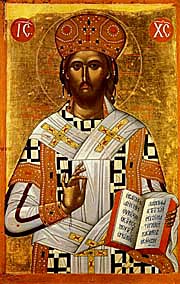
Saint Patrick, Bishop
Feast Day (optional memorial): March 17
March 17th on the Church’s Calendar is the feast (optional memorial) of Saint Patrick. But the manner in which many people celebrate Saint Patrick’s Day has little or nothing at all, to do with Saint Patrick, himself.
Saint Patrick was born in the latter part of the 4th century and lived through the first half of the 5th century. We actually have some genealogy and biographical facts from Patrick, himself, who wrote the following in his “Confessio ”:
“My name is Patrick. I am a sinner, a simple country person, and the least of all believers. I am looked down upon by many. My father was Calpornius. He was a deacon; his father was Potitus, a priest, who lived at Bannavem Taburniae. His home was near there, and that is where I
A Legend of Saint Patrick
Briton Riviere, 1877
was taken prisoner. I was about sixteen at the time. At that time, I did not know the true God. I was taken into captivity in Ireland, along with thousands of others. We deserved this, because we had gone away from God, and did not keep his commandments. We would not listen to our priests, who advised us about how we could be saved.” (Confessio, 1)
Patrick goes on to write about his conversion while in captivity. He eventually was reunited with his parents in Britain, only to voluntarily decide to return to Ireland to preach the Gospel. “A few years later I was again with my parents in Britain. They welcomed me as a son, and they pleaded with me that, after all the many tribulations I had undergone, I should never leave them again. It was while I was there that I saw, in a vision in the night, a man whose name was Victoricus coming as it were from Ireland with so many letters they could not be counted. He gave me one of these, and I read the beginning of the letter, the voice of the Irish people. While I was reading out the beginning of the letter, I thought I heard at that moment the voice of those who were beside the wood of Voclut, near the western sea. They called out as it were with one voice: ‘We beg you, holy boy, to come and walk again among us.’ This touched my heart deeply, and I could not read any further; I woke up then. Thanks be to God, after many years the Lord granted them what they were calling for.” (Confessio, 23)
The Breastplate of Saint Patrick
While we refer to Saint Patrick as the Apostle of Ireland, and usually credit him with bringing the message of Christianity to Ireland, it is interesting to note that in the information about Saint Patrick from the Archdiocese of Armagh, the see he is credited with founding, Dermot McDermott, CFC, in May 2001, notes the following: “The record of the coming of Christianity to Ireland is obscure, even confusing. Traditionally, St Patrick was credited with converting the entire Irish race from paganism in the years 432-461. However, modern research has
In addition to his “Confessio,” we have another surviving writing of Saint Patrick, his “Letter to the Soldiers of Coroticus.” The St Patrick's Confessio HyperStack Project has an excellent web site with both of these writings and other extensive resources. If you want to learn more about the “real” Saint Patrick, you will definitely want to visit this site. You can learn more about The St Patrick's Confessio HyperStack Project and the web site in this introductory video:
One tradition we have in our Church which can be traced back to Saint Patrick is our Easter Fire. Each year at the Easter Vigil we gather outside of church in the darkness around the new Easter Fire, which is blessed on this night. Our Easter (Paschal) Candle is lighted from this newly blessed Easter Fire, and all the baptized then light their own candles from the light of the Paschal Candle, and carry this light into our church, which until that point in the evening is in darkness. Christ, the Light of the World, has overcome the darkness of death and risen from the
I bind unto myself today
The strong Name of the Trinity,
By invocation of the same,
The Three in One and One in Three.
I bind this day to me for ever.
By power of faith, Christ's incarnation;
His baptism in the Jordan river;
His death on Cross for my salvation;
His bursting from the spicèd tomb;
His riding up the heavenly way;
His coming at the day of doom;
I bind unto myself today.
I bind unto myself the power
Of the great love of the cherubim;
The sweet 'well done' in judgment hour,
The service of the seraphim,
Confessors' faith, Apostles' word,
The Patriarchs' prayers, the Prophets' scrolls,
All good deeds done unto the Lord,
And purity of virgin souls.
I bind unto myself today
The virtues of the starlit heaven,
The glorious sun's life-giving ray,
The whiteness of the moon at even,
The flashing of the lightning free,
The whirling wind's tempestuous shocks,
The stable earth, the deep salt sea,
Around the old eternal rocks.
I bind unto myself today
The power of God to hold and lead,
His eye to watch, His might to stay,
His ear to hearken to my need.
The wisdom of my God to teach,
His hand to guide, His shield to ward,
The word of God to give me speech,
His heavenly host to be my guard.
Against the demon snares of sin,
The vice that gives temptation force,
The natural lusts that war within,
The hostile men that mar my course;
Or few or many, far or nigh,
In every place and in all hours,
Against their fierce hostility,
I bind to me these holy powers.
Against all Satan's spells and wiles,
Against false words of heresy,
Against the knowledge that defiles,
Against the heart's idolatry,
Against the wizard's evil craft,
Against the death wound and the burning,
The choking wave and the poisoned shaft,
Protect me, Christ, till Thy returning.
Christ be with me, Christ within me,
Christ behind me, Christ before me,
Christ beside me, Christ to win me,
Christ to comfort and restore me.
Christ beneath me, Christ above me,
Christ in quiet, Christ in danger,
Christ in hearts of all that love me,
Christ in mouth of friend and stranger.
I bind unto myself the Name,
The strong Name of the Trinity;
By invocation of the same.
The Three in One, and One in Three,
Of Whom all nature hath creation,
Eternal Father, Spirit, Word:
Praise to the Lord of my salvation,
Salvation is of Christ the Lord.
Perhaps one of the most famous prayers attributed to Saint Patrick is the “Breastplate of Saint Patrick,” also called the "Lorica," or "The Deer's Cry" or “The Cry of the Deer.” According to tradition, Saint Patrick and his companions were traveling to the court of King Laoghhaire. Druids were waiting along the way to attack and kill Saint Patrick and his companions. Patrick and his companions chanted the Lorica as they walked on their journey. When they passed the Druids, they were said to have appeared as a doe and twenty fawns.
Follow us on Facebook to keep up to date with our news and newest resources!
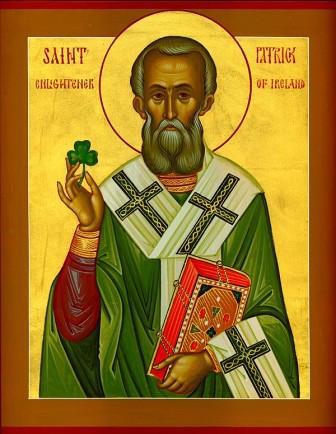
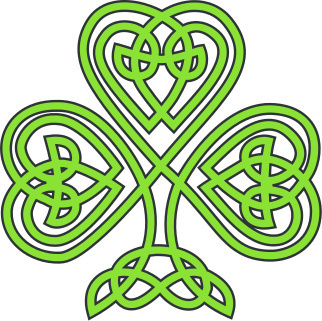
 | ||||||
shown us that there were Christians in Ireland before the advent of St Patrick and that by the time our national apostle had begun his mission here the foundations of the Celtic Church had already been laid. The dates of his birth and death are disputed but it is agreed that he flourished in the fifth century.”
Saint Patrick and the Paschal (Easter) Fire
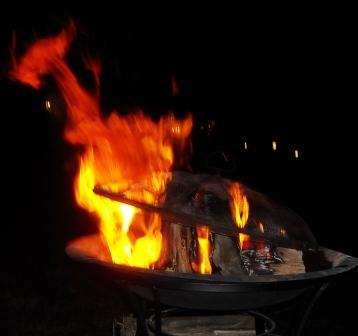
dead!
On Easter’s Eve in the year 432 (some sources say 433) Saint Patrick defied the orders of the king, who had decreed that no fire be lit in all lands of his kingdom until he lit his own fire in Tara for a pagan festival of light. Even household fires had to be extinguished. Saint Patrick, however, lighted the Easter fire on the hill of Slane. Patrick’s fire could be seen by the king on the next hill. The king attempted to have the fire quenched and Patrick killed, but the fire did not die out and Patrick’s faith and courage prevailed. Many, including many in the king’s own court, were converted to Christianity.
Saint Patrick in His Own Words
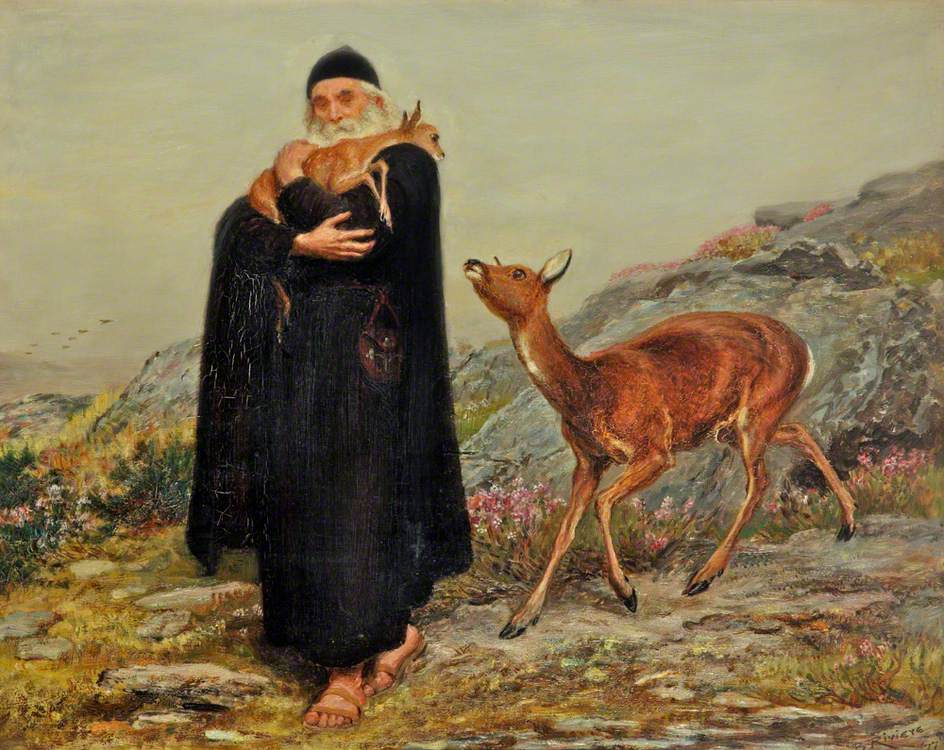
 | ||||||
Celebrating Saint Patrick’s Day
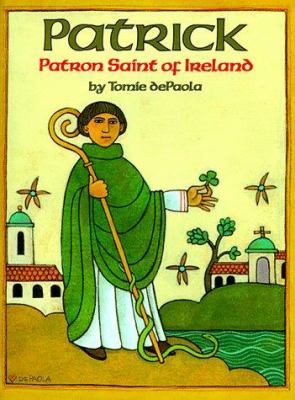
Decorate your table, or prayer table, with a shamrock plant, since the three-leafed shamrock is a symbol of the Trinity, and was a catechetical tool that tradition says Saint Patrick, himself, employed in teaching the Trinity. Pray the “Breastplate of Saint Patrick” and read some excerpts from Saint Patrick’s “Confessio.” Share the story of Saint Patrick with children. One beautifully illustrated and engaging children’s book is “Patrick: Patron Saint of Ireland” by Tomie dePaola. You can download a Saint Patrick coloring page here. Fix a traditional dinner such as corned beef and cabbage, Irish stew, or another traditional Irish recipe. But if you are making Irish soda bread, take note – according to the Society for the Preservation of Irish Soda Bread most of what we
think of as Irish Soda Bread isn’t the traditional soda bread at all! Visit the society’s web site for more information, history, and traditional recipes.